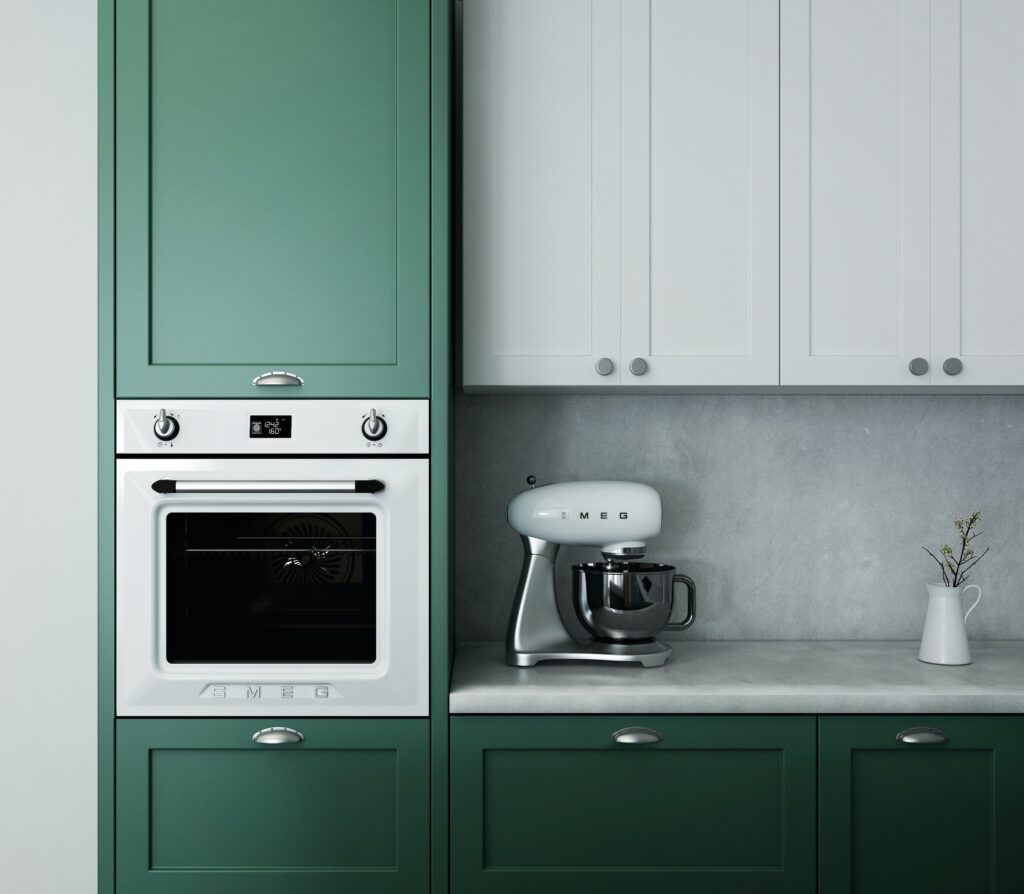Have you ever wondered what materials are used to make a wine fridge? From the sleek exterior to the insulated interior, wine fridges are carefully crafted with a combination of specific materials to create the perfect storage environment for your beloved bottles of wine. With a focus on functionality and style, these fridges are constructed using materials such as stainless steel, tempered glass, and high-quality insulation to ensure optimal temperature and humidity control. Let’s explore the fascinating world of wine fridge materials and discover how they contribute to preserving the taste and quality of your favorite wines.
Understanding the Concept of a Wine Fridge
Definition of a Wine Fridge
A wine fridge, also known as a wine cooler or wine refrigerator, is a specialized appliance designed to store and preserve wine at the ideal temperature. Unlike a regular refrigerator, which is designed for general food storage, a wine fridge provides the specific conditions required for long-term wine aging and preservation. These conditions include a stable temperature, controlled humidity levels, and protection from light and vibrations.
Purpose of a Wine Fridge
The main purpose of a wine fridge is to create an optimal environment for storing and aging wine. Wine is a delicate and perishable beverage that can be easily affected by temperature fluctuations, excessive humidity, and exposure to light. A wine fridge helps to maintain a consistent temperature, usually between 45 to 65 degrees Fahrenheit (7 to 18 degrees Celsius), which is ideal for most types of wine. It also helps to control humidity levels, preventing the corks from drying out or mold from forming. Additionally, a wine fridge provides protection from disruptive vibrations and harmful UV rays, ensuring that the wine ages gracefully and retains its quality.
Variations in Size and Design of Wine Fridges
Wine fridges come in various sizes and designs to cater to different wine storage needs and personal preferences. They range from compact countertop units that can hold a few bottles to larger freestanding or built-in models capable of accommodating dozens or even hundreds of bottles. The size of a wine fridge will depend on the available space and the quantity of wine you intend to store. In terms of design, wine fridges can vary in aesthetics, with options such as sleek stainless steel exteriors, glass doors, and different finishes to seamlessly blend with your kitchen or home bar décor. It is important to consider both size and design when choosing a wine fridge that complements your storage requirements and style preferences.
The Exterior Materials
Use of Stainless Steel
Stainless steel is a popular choice for the exterior of wine fridges due to its durability, aesthetics, and ease of maintenance. It is resistant to rust, corrosion, and staining, making it ideal for an appliance that may come into contact with moisture. Additionally, stainless steel gives a contemporary and elegant look to wine fridges, adding a sleek and sophisticated touch to any kitchen or dining area. It is also easy to clean, requiring only a damp cloth and mild detergent to wipe away smudges or fingerprints.
Employment of Plastic Components
Plastic components, such as handles, trims, and control panels, are commonly used in wine fridges for their versatility and cost-effectiveness. Plastic is lightweight, durable, and resistant to impact, making it suitable for various parts that require flexibility and strength. Additionally, plastic parts can be molded into different shapes and sizes, allowing for greater design flexibility in creating wine fridges with modern and ergonomic features. However, it is important to note that high-quality wine fridges often use more durable and heat-resistant plastics to ensure longevity and reliable performance.
Utilization of Glass for Doors
Glass doors are a popular feature in wine fridges as they allow for a visually appealing display of the wine collection while providing protection from light and temperature fluctuations. Tempered glass is usually used for wine fridge doors due to its strength and safety properties. It is designed to withstand thermal stress and is less likely to shatter into sharp shards if broken. Many wine fridges also have UV-resistant glass to block out harmful ultraviolet rays that can potentially damage the wine.
Black and Silver Finishes and Its Importance
Black and silver finishes are commonly seen in wine fridges, adding a sophisticated and stylish touch to the appliance. These finishes not only enhance the overall aesthetics but also serve a functional purpose. Black finishes help to minimize light exposure inside the wine fridge, as dark colors can absorb and reduce the amount of light that enters the storage compartment. This is crucial in preserving the quality of wine, as prolonged exposure to light can cause degradation and spoilage. Silver finishes, on the other hand, reflect light, which can further assist in maintaining a cooler temperature inside the wine fridge.

The Interior Materials
Use of Metal for Shelves and Racks
Metal, typically stainless steel or chrome-plated wire, is commonly used for the shelves and racks inside wine fridges. Metal shelves and racks provide excellent stability and durability, allowing them to safely support the weight of multiple wine bottles. They are also resistant to corrosion and easy to clean, which is important for maintaining a sanitary storage environment for wine. Metal shelves and racks may adopt different designs, such as slide-out or fixed, to accommodate varying bottle sizes and types.
Employment of Plastic for Drip Trays and Interior Linings
Plastic is often used for drip trays and interior linings in wine fridges due to its water resistance properties and compatibility with food items. Drip trays are located at the bottom of the wine fridge and are designed to catch any condensation or spills, preventing them from affecting the overall cleanliness and functionality of the unit. Interior linings, typically made from food-safe plastic, help to create a barrier between the wine bottles and the interior walls, minimizing the risk of contamination and ensuring a hygienic storage environment.
Utilization of Thermoelectric Elements
Thermoelectric cooling technology is frequently employed in wine fridges to regulate and maintain the desired temperature. This technology utilizes thermoelectric elements, often made of semiconductor materials such as bismuth telluride, to transfer heat from the interior of the wine fridge to the exterior. The absence of mechanical compressors in thermoelectric cooling systems results in quieter operation and reduced vibration, which are crucial for preserving the delicate flavors and aromas of wine. Thermoelectric elements also provide more precise temperature control, allowing for greater accuracy in maintaining the desired temperature range.
Function of LED or Incandescent Lighting
LED or incandescent lighting is commonly used to illuminate the interior of wine fridges, allowing for easy visibility and showcasing of the wine collection. LED lights are favored for their energy efficiency, low heat output, and longer lifespan compared to incandescent bulbs. They provide bright and even lighting without generating excessive heat that can potentially affect the temperature inside the wine fridge. Incandescent lighting, although less energy-efficient, emits a warm and inviting glow that can enhance the overall aesthetics of the wine fridge.
Insulation Materials
Role of Foam Insulation
Foam insulation is one of the key components in wine fridges that helps to regulate temperature and maintain an optimal storage environment. It acts as a barrier against external temperature influences, preventing heat from entering the wine fridge and compromising the quality of the wine. Foam insulation also helps to minimize energy consumption by reducing the workload on the cooling system. Common types of foam insulation used in wine fridges include polyurethane foam, which has excellent thermal insulating properties, and expanded polystyrene (EPS) foam, which provides lightweight and efficient insulation.
Working Principle of Vacuum Insulation Panels
Vacuum insulation panels (VIPs) are advanced insulation materials that offer superior thermal insulation performance. These panels consist of a core material enclosed in an airtight barrier, creating a vacuum space that minimizes heat transfer through conduction and convection. VIPs enable wine fridges to achieve high insulation values with minimal thickness, allowing for more storage space while maintaining energy efficiency. However, due to their higher cost and delicate nature, VIPs are typically used in premium wine fridges that prioritize exceptional insulation performance.
Thermal Insulating Properties and Their Importance
The thermal insulating properties of the materials used in wine fridges play a crucial role in maintaining a stable and consistent temperature. Good insulation helps to minimize temperature fluctuations caused by external factors, such as ambient room temperature or opening/closing of the appliance, ensuring that the wine remains at the desired temperature for optimal aging and preservation. Efficient insulation also reduces energy consumption, as the cooling system does not need to work as hard to counteract heat transfer. Therefore, the selection of insulation materials is essential for the overall performance and energy efficiency of a wine fridge.

Types of Cooling Systems
Compressor-based Cooling Systems
Compressor-based cooling systems, also known as vapor compression systems, are commonly used in wine fridges as they offer robust cooling capabilities. These systems consist of a compressor, condenser, evaporator, and refrigerant, working together to regulate the temperature inside the wine fridge. The compressor compresses the refrigerant gas, causing it to release heat as it condenses into a liquid form in the condenser. The cooled liquid refrigerant then passes through the evaporator, where it evaporates and absorbs heat from the wine, resulting in a lower temperature. Compressor-based cooling systems provide powerful and consistent cooling performance, making them suitable for larger wine fridges or environments with high ambient temperatures.
Thermoelectric Cooling Systems
Thermoelectric cooling systems, as mentioned earlier, utilize thermoelectric elements to cool the wine fridge. These systems operate based on the Peltier effect, which generates a temperature differential when an electric current flows through a junction between two dissimilar conductors. One side of the thermoelectric module becomes cold, while the other becomes hot. By utilizing this effect, thermoelectric cooling systems transfer heat from the interior of the wine fridge to the exterior, thereby cooling the wine. Thermoelectric systems are known for their quiet operation, absence of vibrations, and precise temperature control, making them suitable for smaller wine fridges and environments where noise and vibration are a concern.
Absorption Cooling Systems
Absorption cooling systems, although less common in wine fridges, have certain advantages and are worth mentioning. These systems use a combination of heat, a refrigerant, and an absorbent to achieve cooling. The process starts with a heat source, such as electricity or gas, which provides the energy to drive the cooling cycle. The refrigerant, usually ammonia or lithium bromide, is absorbed by an absorbent material, creating a solution. Heat is applied to this solution, causing the refrigerant to vaporize and separate from the absorbent. The vaporized refrigerant then travels to a condenser, where it releases heat and condenses back into a liquid form. The liquid refrigerant then flows through an evaporator, absorbing heat from the wine and evaporating, thus cooling the wine. Absorption cooling systems offer silent operation, as they do not require mechanical compressors, and can be powered by alternative energy sources such as propane or solar energy.
Comparison of Different Cooling Systems
Each type of cooling system has its own advantages and considerations when it comes to wine fridges. Compressor-based cooling systems provide powerful cooling performance and are generally more affordable, but they tend to produce more noise and vibrations. Thermoelectric cooling systems are silent and vibration-free, with precise temperature control, but may not be as suitable for larger wine fridges or environments with high ambient temperatures. Absorption cooling systems offer quiet operation and the ability to run on alternative energy sources, but they are less common and may have higher upfront costs. The choice of cooling system ultimately depends on the specific requirements and preferences of the wine fridge user.
Noise and Vibration Management Materials
Role of Rubber Mounts
Rubber mounts, also known as isolation mounts or vibration dampeners, are used in wine fridges to minimize the transmission of vibrations and absorb unwanted noise. These mounts are typically made of rubber or a combination of rubber and metal, and they serve as buffers between the vibrating components of the wine fridge, such as the compressor or cooling fan, and the rest of the appliance. Rubber mounts help to isolate vibrations, preventing them from reaching the wine bottles and disrupting the aging process. They also act as shock absorbers, reducing the noise produced by the mechanical components. By incorporating rubber mounts, wine fridges can maintain a quiet and vibration-free environment that is conducive to proper wine preservation.
Use of Soundproofing Materials
Soundproofing materials, such as foam panels or insulation sheets, are employed in wine fridges to further dampen vibrations and reduce noise levels. These materials are placed strategically in areas that are prone to vibration or where noise can potentially escape, such as the interior walls, doors, or access panels of the wine fridge. Soundproofing materials absorb sound waves, preventing them from bouncing around and amplifying within the appliance. This helps to create a quieter and more pleasant environment both inside and outside the wine fridge. By effectively managing noise and vibration, wine fridges can protect the wine from any potential disturbances that may affect its quality.
Importance of Vibration Damping in Wine Preservation
Vibration damping plays a crucial role in preserving wine quality. Vibrations, even the slightest ones, can disturb the sediments in the wine, accelerating their settling process and potentially affecting the clarity and taste of the wine. Vibrations can also introduce unnecessary movement, which can disturb the wine’s aging process and prevent it from developing complexity and richness. By incorporating vibration dampening materials and mechanisms, wine fridges can ensure gentle and stable conditions for the wine, allowing it to mature properly over time. This results in wines that offer the best possible taste and aroma.

Shelving Options
Wooden Shelves and Racks
Wooden shelves and racks are a classic and traditional choice for wine fridges. They provide an attractive and rustic aesthetic that complements the elegance of wine bottles. Wooden shelves and racks typically use hardwood materials such as oak, mahogany, or cedar, which are moisture-resistant and durable. They offer a natural and warm ambiance to the wine fridge and can enhance the overall décor of a wine cellar or wine room. Additionally, wood has insulating properties that can help buffer against temperature fluctuations, providing additional protection to the stored wine. However, it is important to ensure that the wood used is of high-quality and properly treated to prevent any potential off-flavors or contamination.
Metal Shelves and Racks
Metal shelves and racks are a popular choice in modern wine fridges. They offer sleek and contemporary designs that suit modern kitchen or home bar aesthetics. Metal options, typically made of stainless steel or chrome-plated wire, are durable, easy to clean, and resistant to corrosion. They provide stable support for the wine bottles and allow for better airflow within the wine fridge, ensuring even cooling. Metal shelving options often feature adjustable racks or sliding shelves, providing flexibility in accommodating different bottle sizes and shapes. The use of metal also eliminates the risk of any potential wood-related flavors or odors affecting the wine.
Sliding vs Fixed Shelves
Wine fridges can have either sliding or fixed shelves, each with its own benefits and considerations. Sliding shelves, also known as pull-out shelves or glide-out racks, allow for easy access to the wine bottles stored at the back of the fridge. They typically operate on ball-bearing or telescopic slides, enabling smooth and effortless movement. Sliding shelves provide convenient organization and visibility of the wine collection, making it easier to find and retrieve specific bottles. On the other hand, fixed shelves offer maximum stability and structure, ensuring that the wine bottles remain securely in place. Fixed shelves are often preferred for long-term wine storage or for larger wine fridges where organization and accessibility are not the main concerns.
Importance of Adjustable Shelving in Wine Fridges
Adjustable shelving is an important feature in wine fridges, as it allows for flexibility in accommodating different bottle sizes and shapes. Wine bottles can vary in diameter and height, especially when considering sparkling wines or larger bottle formats. Adjustable shelves provide the ability to customize the storage configuration, maximizing the use of space and ensuring that different types of wine bottles can be stored properly. This feature is particularly useful for wine enthusiasts who have a diverse collection or who enjoy exploring different wine regions and styles. With adjustable shelving, you can easily adapt the wine fridge to your evolving storage needs without compromising on the proper positioning and stability of the wine bottles.
Considerations in Choosing Materials for Wine Fridges
Durability of Materials
When selecting a wine fridge, it is essential to consider the durability of the materials used. The exterior materials, such as stainless steel or plastic components, should be resistant to rust, corrosion, and staining to ensure long-term performance and aesthetics. Similarly, the interior materials, including metal shelves, plastic linings, and drip trays, should be durable, easy to clean, and capable of withstanding exposure to moisture. High-quality materials will ensure that the wine fridge can maintain its functionality and appearance over an extended period, providing reliable wine storage and preservation.
Energy Efficiency
Energy efficiency is an important factor to consider when choosing a wine fridge. The insulation materials used, such as foam insulation and vacuum insulation panels, contribute to the energy efficiency of the appliance by minimizing heat transfer and reducing energy consumption. Additionally, the cooling system employed, whether compressor-based, thermoelectric, or absorption, can influence the energy usage of the wine fridge. Selecting a wine fridge with good insulation and an energy-efficient cooling system will not only reduce your environmental footprint but also save you money on electricity bills in the long run.
Cost Factors
Cost is an important consideration when purchasing a wine fridge, as it can vary depending on the size, design, and materials used. Wine fridges with premium features and high-end materials may come with a higher price tag. It is essential to find a balance between your budget and the desired performance and aesthetics of the wine fridge. Assess your storage needs and preferences to determine the appropriate size, design, and materials that align with your requirements and budget. Remember that investing in a high-quality wine fridge can provide long-term value and ensure the proper storage and aging of your precious wine collection.
Ease of Maintenance and Cleaning
Ease of maintenance and cleaning is another factor to consider when selecting a wine fridge. Look for materials that are easy to wipe or wash, such as stainless steel or plastic, to keep the exterior surfaces clean and free from smudges or fingerprints. Removable shelves and racks, regardless of material, make it easier to clean the wine fridge interior and accommodate larger or irregularly shaped bottles. Check if the interior linings and drip trays are dishwasher-safe or can be easily cleaned with mild detergent. Opting for materials that require minimal effort to maintain ensures a hygienic and well-kept storage environment for your wine.
By understanding the concept of a wine fridge and the materials used in its construction, you can make an informed decision when choosing the right one for your wine storage needs. Consider the exterior materials, such as stainless steel and glass, that provide durability and elegance. Explore the interior materials, such as metal shelves and plastic linings, that offer stability and cleanliness. Understand the insulation materials and cooling systems that regulate temperature and energy efficiency. Lastly, evaluate the shelving options, noise and vibration management materials, and other considerations to ensure a wine fridge that delivers optimal wine preservation and blends seamlessly with your lifestyle and environment. With the right wine fridge, you can confidently store and age your wine collection, unlocking the full potential of each bottle for your enjoyment.

